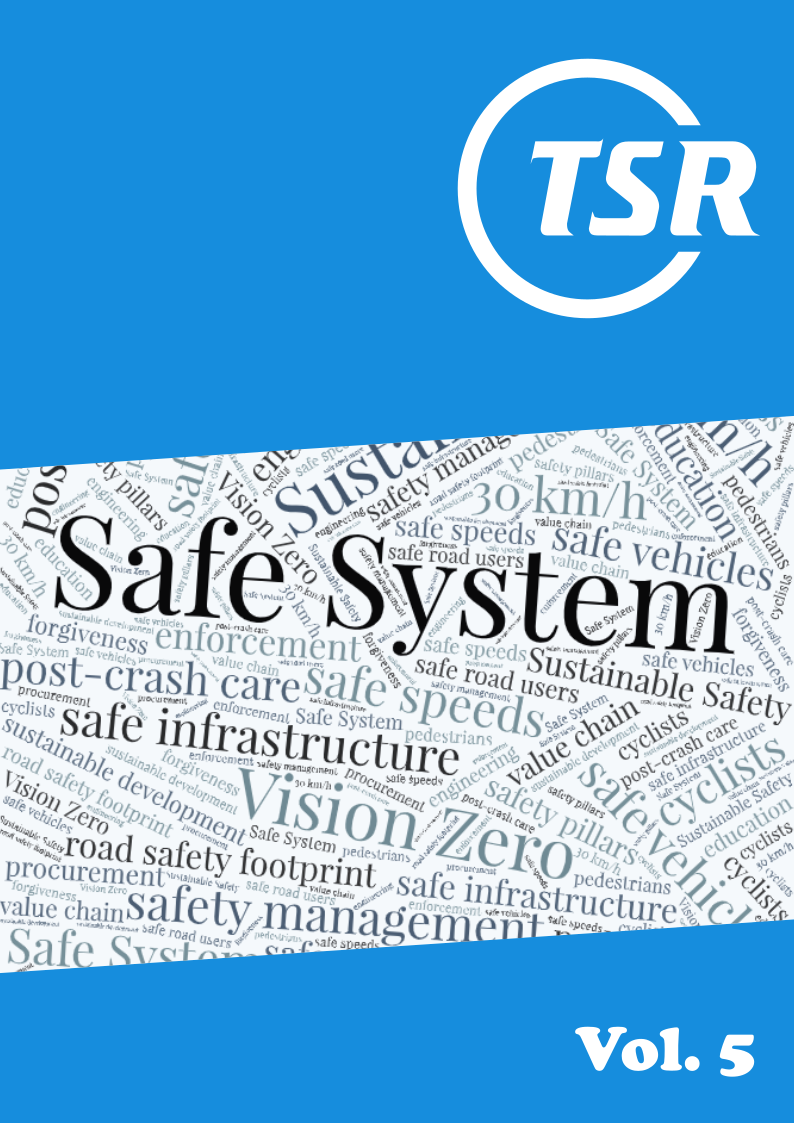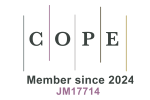Innovation and traffic safety: analysis of four Norwegian county authorities
DOI:
https://doi.org/10.55329/ntgl3123Keywords:
innovation culture, safety culture, traffic safety innovationsAbstract
This study examines the relationships between traffic safety innovations, innovation culture, and safety culture in four Norwegian county authorities three years after a comprehensive structural reform. Following the reform, the county authorities had to establish new organisations, routines, and systems. The study is based on qualitative interviews (N = 42) and a quantitative survey (n = 392) among people who work with traffic safety and/or mobility in the county authorities. The qualitative results show in particular that the respondents have gained new perspectives on traffic safety as a result of being co-organised with new professional groups. Additionally, we see examples of new methods and new forms of collaboration in traffic safety being implemented. The survey results show statistically significant differences between the county authorities' scores on an index for traffic safety innovations. County authorities' scores on this index is predicted by the county authorities' innovation culture, which in turn is predicted by safety culture. This indicates that innovation culture should be understood as an aspect of a learning safety culture. We find statistically significant differences between county authorities with respect to how demanding the organizational changes related to the regional reform have been for the county authorities studied. The results from this study can also be useful for change processes in other organisations.
Downloads
References
Anderson, N. R., M. A. West (1998), 'Measuring climate for work group innovation: Development and validation of the team climate inventory', Journal of Organizational Behavior, 19(3), 235–258. DOI: https://doi.org/10.1002/(SICI)1099-1379(199805)19:3<235::AID-JOB837>3.3.CO;2-3
Antonsen, S. (2009), 'The relationship between culture and safety on offshore supply vessels', Safety Science, 47(8), 1118–1128. DOI: https://doi.org/10.1016/j.ssci.2008.12.006
Asheim, B., A. Isaksen (2002), 'Regional innovation systems: The integration of local “sticky” and global “ubiquitous” knowledge', Journal of Technology Transfer, 27(1), 77–86. DOI: https://doi.org/10.1023/A:1013100704794
Belin, M. A., P. Tillgren, E. Vedung (2012), 'Vision Zero—a road safety policy innovation', International Journal of Injury Control and Safety Promotion, 19(2), 171–179. DOI: https://doi.org/10.1080/17457300.2011.635213
Berg, P. O. (1985), 'Organizational change as a symbolic transformation process', in Frost, P. J., M. Moore, M. R. Louis, C. C. Lundberg, J. Martin (eds.), Organizational Culture, (Beverly Hills, US: Sage).
Bower, P., S. Campbell, C. Bojke, B. Sibbald (2003), 'Team structure, team climate and the quality of care in primary care: An observational study', Quality and Safety in Health Care, 12, 273–279. DOI: https://doi.org/10.1136/qhc.12.4.273
Braun, V., V. Clarke (2006), 'Using thematic analysis in psychology', Qualitative Research in Psychology, 3(2), 77–101. DOI: https://doi.org/10.1191/1478088706qp063oa
Cooke, P. (2004), 'Regional innovation systems—an evolutionary approach', Regional innovation systems: the role of governance in a globalized world, (London, UK: Routledge).
Craens, J., K. Frenken, T. Meelen (2022), 'Chapter 15: Mission-oriented innovation policy: The case of the Swedish "Vision Zero" approach to traffic safety', in van Wee, B., J. Annema, J. Köhler (eds.), Innovations in Transport, (Cheltenham, UK: Edward Elgar Publishing).
Edquist, C. (1997), Systems of Innovation: Technologies, Institutions and Organizations, (London, Uk: Routledge).
Eisenhardt, K. M., B. N. Tabrizi (1995), 'Accelerating adaptive processes: Product innovation in the global computer industry', Administrative Science Quarterly, 40(1), 84–110. DOI: https://doi.org/10.2307/2393701
Elvik, R. (2022), 'Vision Zero in Norway', The Vision Zero Handbook, (Cham, Switzerland: Springer). DOI: https://doi.org/10.1007/978-3-030-23176-7_10-1
Elvik, R., T. O. Nævestad, V. Milch, M. Bugge, H. E. Normann, E. Skogli (2023), 'Innovation and long-term planning in public policy: The case of national road safety plans in Norway', Traffic Safety Research, 5, 000030. DOI: https://doi.org/10.55329/egcn2801
Fagerberg, J. (2005), 'Innovation: A guide to the literature', in Fagerberg, J., D. C. Mowery, R. R. Nelson (eds.), The Oxford Handbook of Innovation, (Oxford, UK: Oxford University Press). DOI: https://doi.org/10.1093/oxfordhb/9780199286805.001.0001
Flin, R., K. Mearns, P. O’connor, R. Bryden (2000), 'Measuring safety climate: Identifying the common features', Safety Science, 34(1–3), 177–192. DOI: https://doi.org/10.1016/S0925-7535(00)00012-6
GAIN, (2001), Operator’s Flight Safety Handbook, (Alexandria, Virginia, US: Flight Safety Foundation).
Gherardi, S., D. Nicolini, F. Odella (1998), 'What do you mean by safety? Conflicting perspectives on accident causation and safety management in a construction firm', Journal of Contingencies and Crisis, 6(4), 202–213. DOI: https://doi.org/10.1111/1468-5973.00089
Guldenmund, F. W. (2000), 'The nature of safety culture: a review of theory and research', Safety Science, 34(1–3), 215–257. DOI: https://doi.org/10.1016/S0925-7535(00)00014-X
Haukelid, K. (2008), 'Theories of (safety) culture revisited-an anthropological approach', Safety Science, 46(3), 413–426. DOI: https://doi.org/10.1016/j.ssci.2007.05.014
Hesjevoll, I. S., F. Sagberg, A. K. Høye, R. Elvik (2022), 'Dødsulykker innenfor og utenfor Nullvisjonens systemgrenser—Egenskaper ved dødsulykker i vegtrafikken og potensial for reduksjon basert på Statens vegvesens ulykkesanalyser (UAG) i perioden 2017–2020 [Fatal road accidents and the Vision Zero—Accident characteristics and potential for accident reduction based on in-depth analyses of fatal road accidents 2017–2020]', TØI, TØI-rapport 1887/2022.
Hudson, P. (2003), 'Applying the lessons of high risk industries to health care', Quality and Safety in Health Care, 12, 7–12. DOI: https://doi.org/10.1136/qhc.12.suppl_1.i7
ITF OECD, (2022), 'The Netherlands', International Transport Forum—Organisation for Economic Co-operation and Development (ITF OECD).
Karim, S. (2009), 'Business unit reorganization and innovation in new product markets', Management Science, 55(7), 1237–1254. DOI: https://doi.org/10.1287/mnsc.1090.1017
Keller, R. T. (2001), 'Cross-functional project groups in research and new product development: diversity, communications, job stress, and outcomes', Academy of Management Journal, 44(3), 547–555. DOI: https://doi.org/10.5465/3069369
Klein Woolthuis, R., M. Lankhuizen, V. Gilsing (2005), 'A system failure framework for innovation policy design', Technovation, 25(6), 609–619. DOI: https://doi.org/10.1016/j.technovation.2003.11.002
Krogstad, J. R. (2020), 'Trafikksikkerhetsarbeidet etter regionreformen [Traffic safety work after the regional reform]', NORCE, Rapport 33.
Lappalainen, F. J., J. Kuronen, U. Tapaninen (2012), 'Evaluation of the ISM Code in the Finnish shipping companies', Journal of Maritime Research, 9(1), 23–32.
Lundvall, B. A. (1992), National Systems of Innovation: Towards a theory of innovation and interactive learning, (London, UK: Pinter).
Maskell, P., A. Malmberg (1999), 'Localised learning and industrial competitiveness', Cambridge Journal of Economics, 23(2), 167–185. DOI: https://doi.org/10.1093/cje/23.2.167
Mathisen, G. E., O. Martinsen, S. Einarsen (2008), 'The relationship between creative personality composition, innovative team climate, and team innovativeness: An input-process-output perspective', Journal of Creative Behaviour, 42(1), 13–31. DOI: https://doi.org/10.1002/j.2162-6057.2008.tb01078.x
Meyer, I., M. Marais (2009), 'The strategic context of organisational restructuring', Management Today, 25(7).
Nævestad, T.-O. (2010), 'Cultures, crises and campaigns: Examining the role of safety culture in the management of hazards in a high risk industry', PhD thesis, University of Oslo, Norway.
Nævestad, T.-O., V. Milch, J. Blom, R. Elvik, M. Bugge, H. Endresen Normann, E. Skogli (2023), 'Innovasjon og trafikksikkerhet: Analyse av fire norske fylkeskommuner etter regionreformen [Innovation and traffic safety: Analysis of four Norwegian county municipalities after the regional reform]', Transportøkonomisk institutt, TØI-Rapport 1968/2023.
Nævestad, T.-O., R. Phillips, I. Storesund Hesjevoll (2018), 'How can we improve safety culture in transport organizations? A review of interventions, effects and influencing factors', Transportation Research Part F: Psychology and Behaviour, 54, 28–46. DOI: https://doi.org/10.1016/j.trf.2018.01.002
Naveh, E., T. Katz-Navon (2015), 'A Longitudinal study of an intervention to Improve road safety climate: Climate as an organizational boundary spanner', Journal of Applied Psychology, 100(1), 216–226. DOI: https://doi.org/10.1037/a0037613
Newman, A., H. Round, S. Wang, M. Mount (2020), 'Innovation climate: A systematic review of the literature and agenda for future research', Journal of Occupational and Organizational Psychology, 93, 73–109. DOI: https://doi.org/10.1111/joop.12283
Patankar, M. S. (2019), 'Maintenance resource management for technical operations', Crew Resource Management, 357–405. DOI: https://doi.org/10.1016/B978-0-12-812995-1.00013-0
Patterson, M., M. West, V. Shackleton, J. Dawson, R. Lawthom, S. Maitlis (2005), 'Validating the organizational climate measure: Links to managerial practices, productivity and innovation', Journal of Organizational Behavior, 26(4), 379–408. DOI: https://doi.org/10.1002/job.312
Pidgeon, N., M. O’leary (2000), 'Man-made disasters: Why technology fail and organizations (sometimes) fail', Safety Science, 34(1–3), 15–30. DOI: https://doi.org/10.1016/S0925-7535(00)00004-7
Puccio, G. J., M. C. Murdock, M. Mance (2008), 'Creative leadership: Skills that drive change', Creativity and Innovation, 17(1), 88–89. DOI: https://doi.org/10.1111/j.1467-8691.2008.00468.x
Reason, J. (1997), Managing the Risk of Organisational Accidents, (London, UK: Routledge).
Richter, A., C. Koch (2004), 'Integration, differentiation and ambiguity in safety cultures', Safety Science, 42(8), 703–722. DOI: https://doi.org/10.1016/j.ssci.2003.12.003
Rogers, E. M. (2003), Diffusion of Innovations, (New York, US: Free Press).
Schein, E. H. (1992), Organizational Culture and Leadership, (San Francisco, US: Jossey-Bass).
Somech, A. (2006), 'The effects of leadership style and team process on performance and innovation in functionally heterogeneous teams', Journal of Management, 32(1), 132–157. DOI: https://doi.org/10.1177/0149206305277799
Statens vegvesen, (2022), 'Vedlegg til utredningsoppdraget—Trafikksikkerhet [Annex to the study assignment—Road safety]', Statens vegvesen, NTP 2025–2036.
Sundbo, J. (1996), 'The balancing of empowerment. A strategic resource based model of organizing innovation activities in service and low-tech firms', Technovation, 16(8), 397–409. DOI: https://doi.org/10.1016/0166-4972(96)00029-6
Tierney, P., S. M. Farmer, G. B. Graen (1999), 'An examination of leadership and employee creativity: The relevance of traits and relationships', Personnel Psychology, 52(3), 591–620. DOI: https://doi.org/10.1111/j.1744-6570.1999.tb00173.x
Varhelyi, A. (2016), 'Road Safety Management—The need for a systematic approach', The Open Transportation Journal, 10(1), 137–155. DOI: https://doi.org/10.2174/1874447801610010137
West, M. A., N. R. Anderson (1996), 'Innovation in top management teams', Journal of Applied Psychology, 81(6), 680–693. DOI: https://doi.org/10.1037//0021-9010.81.6.680
Zennouche, M., O. J. Zhang, B. W. Wang (2014), 'Factors influencing innovation at individual, group and organisational levels: A content analysis', International Journal of Information Systems and Change Management, 7(1), 23–42. DOI: https://doi.org/10.1504/IJISCM.2014.065052
Zuschlag, M., J. Ranney, M. Coplen (2016), 'Evaluation of a safety culture intervention for Union Pacific show improved safety and safety culture', Safety Science, 83, 59–73. DOI: https://doi.org/10.1016/j.ssci.2015.10.001
Published
How to Cite
Issue
Section
License
Copyright (c) 2024 Tor-Olav Nævestad, Vibeke Milch, Jenny Blom, Rune Elvik, Markus Bugge, Håkon Endresen Normann, Erland Skogli, Lars Even Egner

This work is licensed under a Creative Commons Attribution 4.0 International License.
Funding data
-
Norges Forskningsråd
Grant numbers 326992















